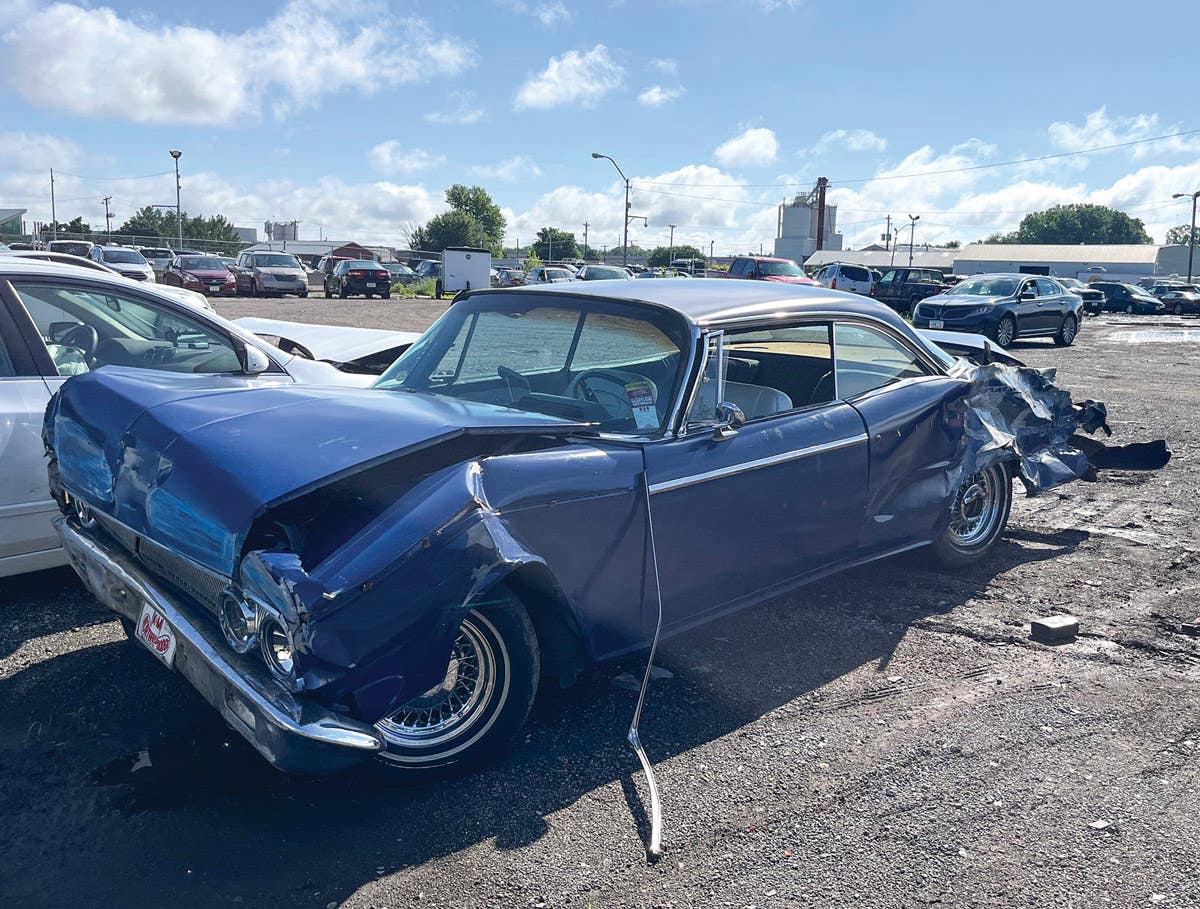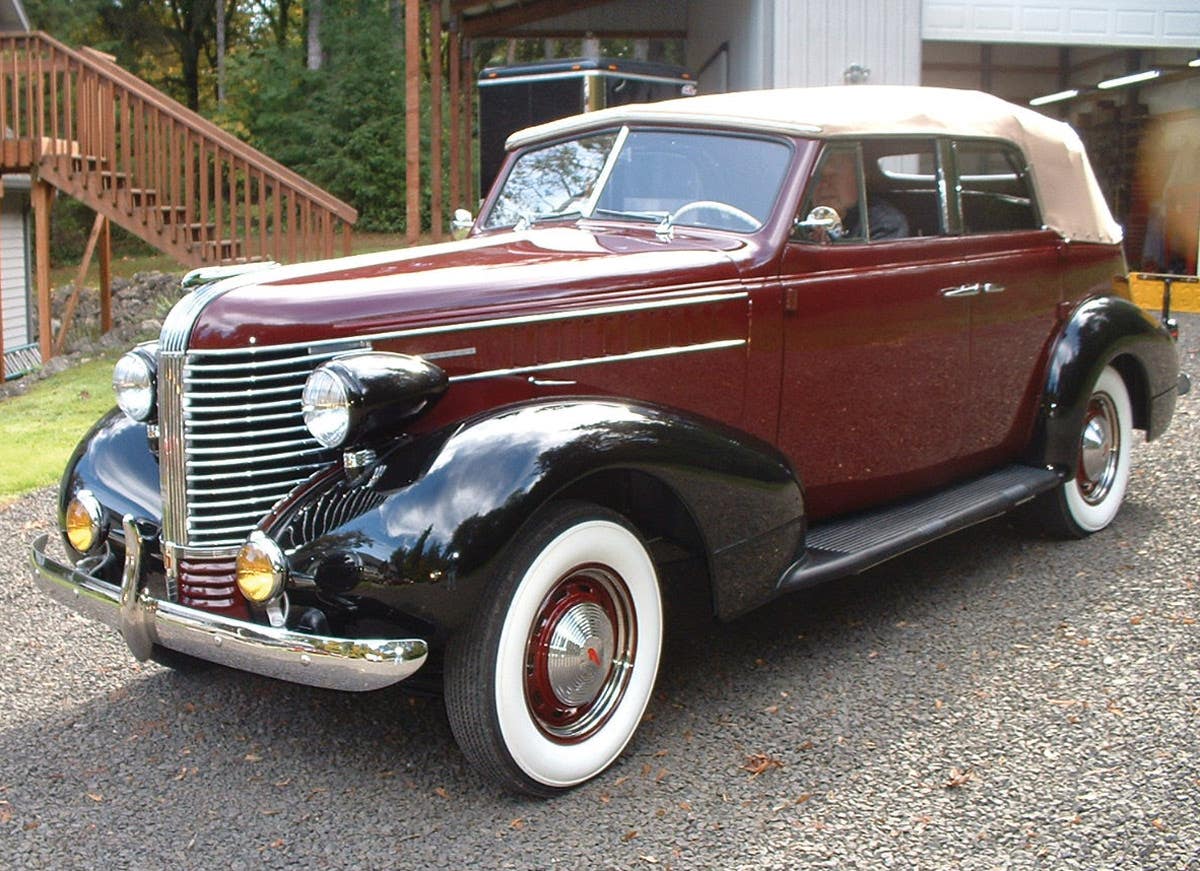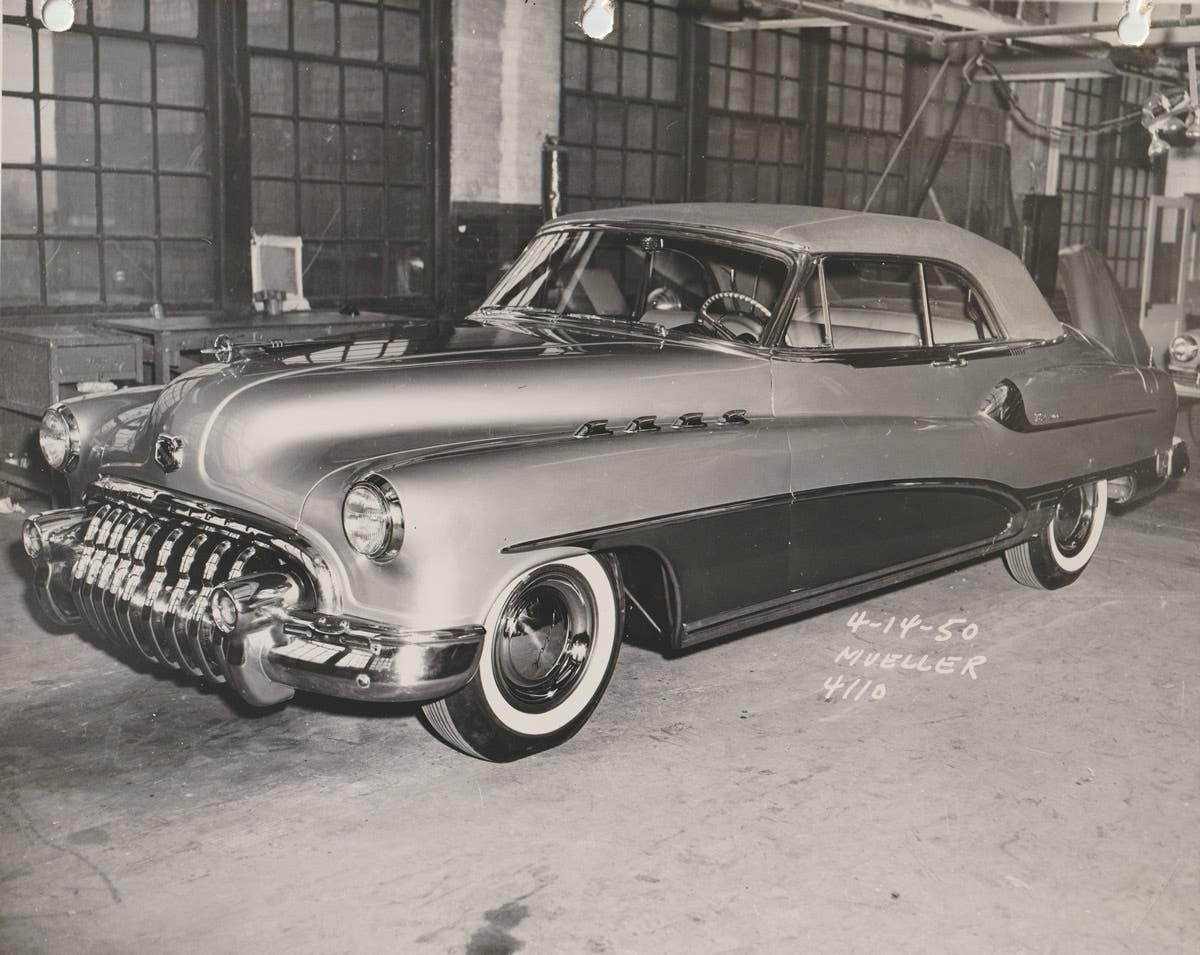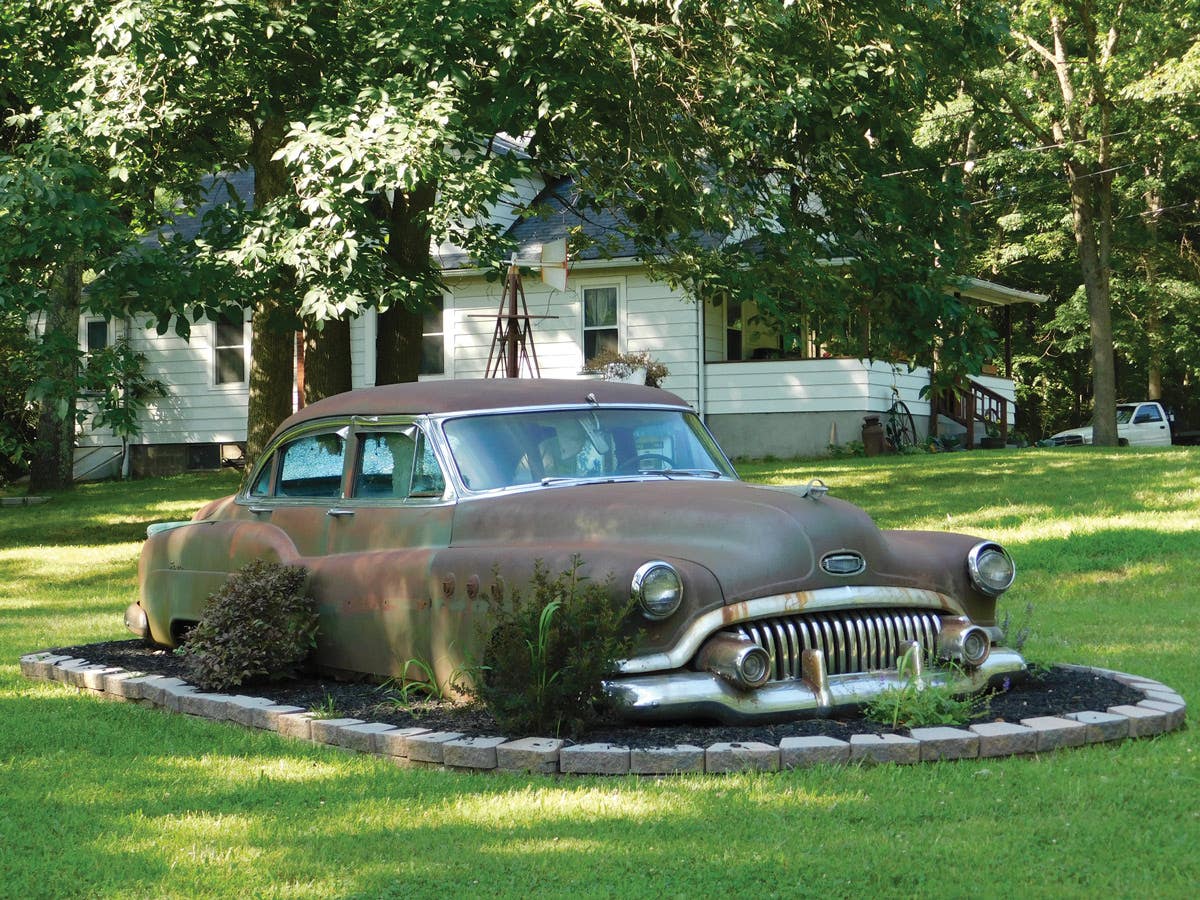The Bergholt Streamline Car
At least a month before the Pierce-Arrow Silver Arrow was introduced, a remarkable car had been running on the streets of far-away Minneapolis that bore an uncanny resemblance to the Silver Arrow. It was the Bergholt Streamline, an innovative new car designed by Fred Bergholt and built under his direction.
The biggest design news in the entire field of transportation during the 1930s was, without a doubt, streamlining. The streamline movement forever changed not just automobiles, but other forms of transportation, architecture and most manufactured goods that were part of everyday life. Everything from trains to toasters got totally restyled in the ’30s as a result of the acceptance of the concepts of streamlining. This is the story of a unique streamlined automobile designed and built by a visionary man from Minneapolis named Fred Bergholt, who built his dream in 1932, at the very dawn of the streamline age.
The Streamline is the product of Fred Bergholt, a Minneapolis resident who wanted a car that was as aerodynamic as an airplane.
Streamlining burst on the scene, seemingly all over the world at once, in 1933 and ’34. Those two years saw the introduction of the first popular and successful high-speed lightweight streamlined train, the Burlington Zephyr. On the automotive scene, a number of radical streamlined concept cars appeared at such places as the Chicago Century of Progress Exposition. One of these concept cars by designer John Tjaarda became the prototype for the Lincoln-Zephyr, which was put in production in 1936. In Europe, there was much activity as well. The Volkswagen Beetle made its first appearance, as did the revolutionary rear-engined Czech Tatra. In the United States, the aerodynamic Chrysler Airflow was introduced in 1934.
At a time when nearly all automobiles sported open front fenders, the Streamline had enclosed fenders that sloped from the windshield to the front bumper.
Interest in smoothing the contours of moving objects such as trains and autos was inspired by the infant aviation industry. Airplanes had to move with the absolute minimum of wind resistance, or they simply would not have enough power to be able to maintain air speed. Interest in aviation was crystallized by Lindberg’s solo non-stop flight from New York to Paris in 1927. From that point on, airplane-inspired streamlining became the wave of the future. After a five-year gestation period, streamlining burst on the scene from all directions in 1933.
One of the significant new automobile designs that first appeared in January 1933 at the New York Auto Show was the Pierce-Arrow Silver Arrow. This was a trailblazing new design on a Pierce-Arrow V-12 chassis. Only six were built, as the real purpose was to present new design concepts. The roof line was a racy fastback, and it was one of the first cars designed in America with full fender design, that made the fenders an integral part of the body and extended them the entire length of the car. This design provided room for the spare tire carriers to be entirely enclosed within the body sides just behind the front wheels. The body sides extended out to the full width of the car, completely covering the running boards. It was a stunning car and became the talk of the town.
Inside the cockpit, occupants of the Streamline can enjoy a luxurious environment, complete with fold-out windshield sections and map pockets in the door panels.
What Pierce-Arrow and New Yorkers didn’t know was that, for at least a month before the Silver Arrow was introduced, a car had been running on the streets of far-away Minneapolis, which bore an uncanny resemblance to the Silver Arrow. It was the Bergholt Streamline, an innovative new car designed by Fred Bergholt and built under his direction. The Bergholt car had the same sloping front end, the same fastback rear, and sides that enclosed even more of the fenders than the Pierce. The spare tire was even concealed in the front fender, just like the Silver Arrow. How did such a coincidence come about?
The rear passenger compartment of the big two-door sedan features a large seat, side lamps and map pockets. The split rear window is similar to the Pierce-Arrow Silver Arrow.
Fred Bergholt was an inventive, creative guy who became interested in aviation in the 1920s. He and his brother actually built and sold gliders and then airplanes for a time. After 1927, Fred began thinking about designing a car. His aircraft experience led him from the start to seek an innovative new shape that would move through the air smoothly like an airplane. He came up with two inspirations, both inspired by animals. He concluded that the turtle was one of the most aerodynamic, as well as hydrodynamic, forms in nature. Whether swimming or walking, water or air flows off the turtle’s back without encumbrance. In promoting his car design later, Bergholt made much use of his turtle inspiration.
The other inspiration from nature was the hammerhead shark, which inspired Fred to make the body larger at the front and tapering down at the rear. Both of these design concepts are found to various degrees in the work of other early streamline designers. The basic tear-drop shape, often a streamline design objective, is a good example. Bergholt’s concepts are very similar to those advocated by Leon Jaray, a pioneering European advocate of automotive aerodynamics in the ’20s.
From the rear, the Streamline shows the fastback styling that became popular years after the car was constructed.
Bergholt bought a new 1932 Ford V-8 sedan and removed the body. A metal worker named Edgar Lantz then went to work to shape a new metal body to Fred’s design. But before work began, Fred took out several patents on the unique design features of the Bergholt Streamline (his choice of name for the car). Many years later, after Fred contended that other car builders were using his design ideas, litigation resulted in a settlement in which Fred felt he had been vindicated.
The car was completed in 1932, well before the Silver Arrow. Fred subsequently showed it to several auto companies, but none were interested. Bergholt claimed they all thought it was too far ahead of its time and that he should come see them again in five years! After that, the Streamline was put to work promoting the family cosmetics business, where it rang up over 200,000 miles and went through three engines! Fred claimed that the slippery body let the car and engine run so fast that engine bearings burned out.
In Fred’s later years, the family fortunes turned for the worse, and the Streamline languished in storage. After Bergholt died in 1978, the family turned the car over to a good friend Harlow Loney, who has cared for the car ever since. In 1993, Loney began a complete restoration of the Streamline, a process that took 10 years. Today, the Streamline looks better, and is in better condition than it has been since it was built. The 1932-vintage Ford V-8 runs great, and the entire interior has been beautifully redone. Standing close to the car is a reminder of how foresighted Fred Bergholt was. The sides flair out dramatically, reminding one of the ground effects spoilers on modern performance cars. The wind-cheating, sloping front end, the concealed running boards and the spare tire well concealed inside the front fender are all reminders of Fred’s creative genius.
Harlow Loney, the custodian and restorer of the Streamline, has just died. We join the Bergholt family in their hopes that a good and appropriate home can be found for this most outstanding and unique car. For further information about the Bergholt Streamline, contact Tom Herman at 612-210-5922.







